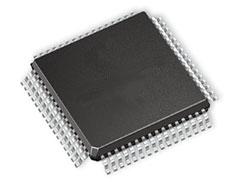DescriptionThe ATMEGA128A-16AU is one member of the ATMEGA128A series.The ATmega128A is a low-power CMOS 8-bit microcontroller based on the AVR enhanced RISC architecture. By executing powerful instructions in a single clock cycle, the ATmega128A achieves throughputs approaching 1 MIPS per MHz allowing the system designer to optimize power consumption versus processing speed.
Features of the ATMEGA128A-16AU are:(1)133 Powerful instructions most single clock cycle execution; (2)32 x 8 general purpose working registers + peripheral control registers; (3)fully static operation; (4)up to 16 MIPS Throughput at 16 MHz; (5)on-chip 2-cycle multiplier; (6)128K bytes of in-system self-programmable flash program memory; (7)4K bytes EEPROM; (8)4K bytes internal SRAM; (9)write/erase cycles: 10,000 Flash/100,000 EEPROM; (10)up to 64K bytes optional external memory space; (11)programming lock for software security; (12)SPI Interface for In-System Programming; (13)two 8-bit timer/counters with separate prescalers and compare modes; (14)two expanded 16-bit timer/counters with separate prescaler, compare mode and capture mode; (15)real time counter with separate oscillator; (16)two 8-bit PWM channels; (17)6 PWM Channels with programmable resolution from 2 to 16 bits; (18)output compare modulator.
The absolute maximum ratings of the ATMEGA128A-16AU can be summarized as:(1)operation temperature:-40 to 85;(2)power supply:2.7 to 5.5V.The Idle mode stops the CPU while allowing the SRAM, Timer/Counters, SPI port, and interrupt system to continue functioning. The Power-down mode saves the register contents but freezes the Oscillator, disabling all other chip functions until the next interrupt or Hardware Reset. In Power-save mode, the asynchronous timer continues to run, allowing the user to maintain a timer base while the rest of the device is sleeping. The ADC Noise Reduction mode stops the CPU and all I/O modules except Asynchronous Timer and ADC, to minimize switching noise during ADC conversions. In Standby mode, the Crystal/Resonator Oscillator is running while the rest of the device is sleeping. This allows very fast start-up combined with low power consumption. In Extended Standby mode,both the main Oscillator and the Asynchronous Timer continue to run.

 ATMEGA128A-16AU Data Sheet
ATMEGA128A-16AU Data Sheet







